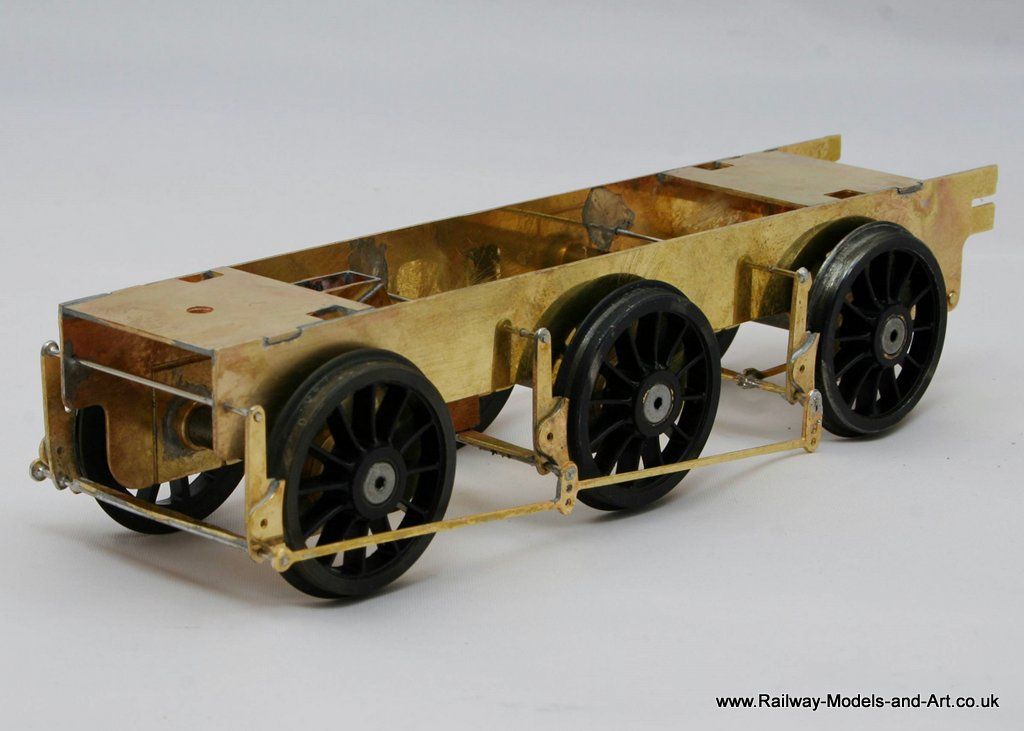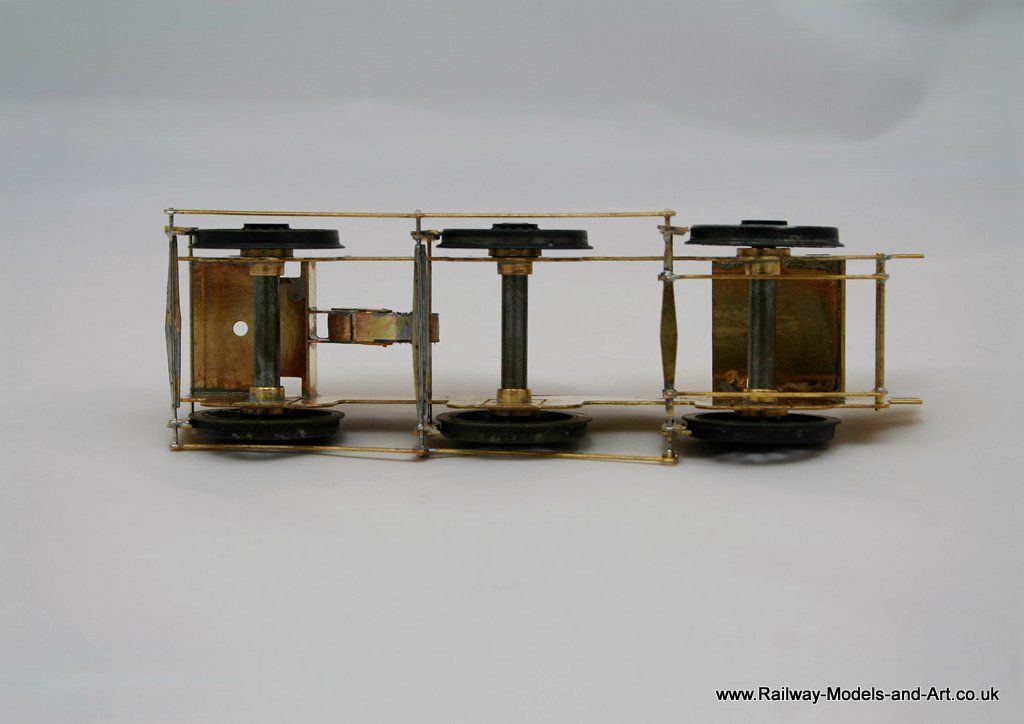Page 1 of 5
Gladiator B16/1 A North Eastern Workhorse
Posted: Sat Apr 01, 2017 8:42 pm
by Robpulham
The next build to cross my workbench is another one that's not for me but for the same Gent that I built the G5 for last year. This one is a finish it off build of a Gladiator B16/1
This is where I am starting from.
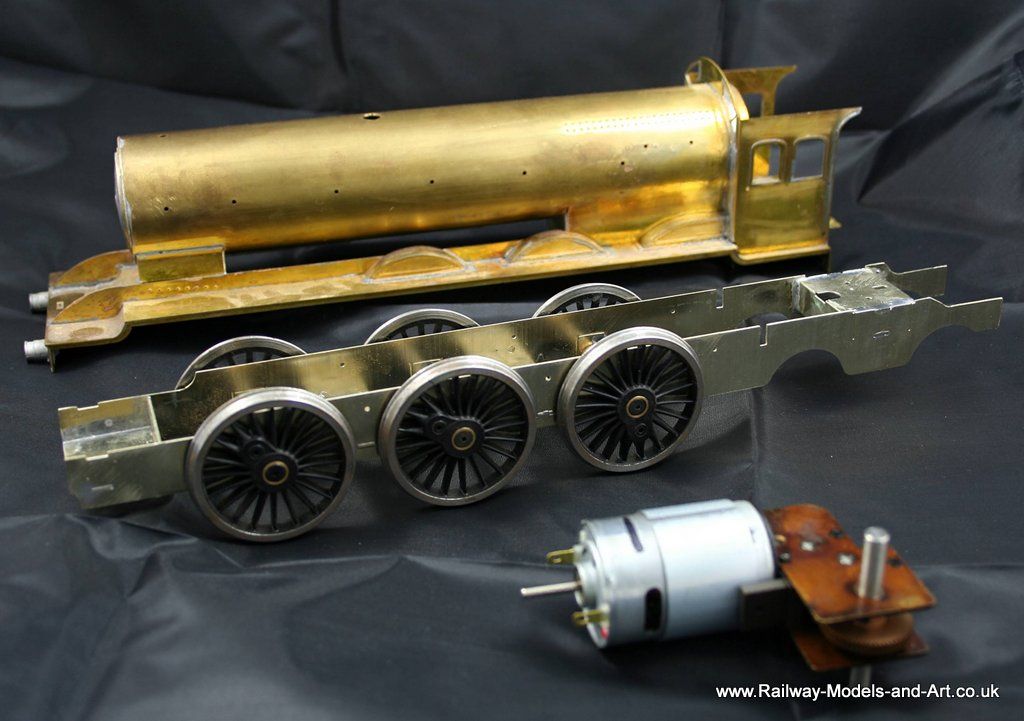
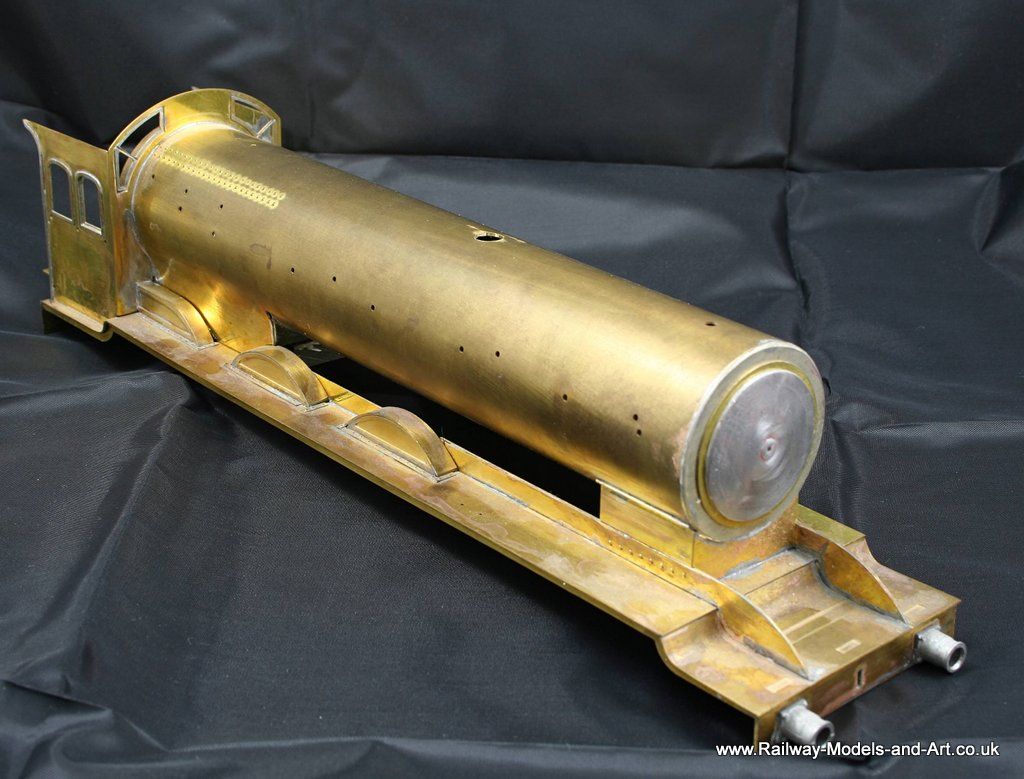
The main body work and the basic chassis are built. The chassis is to be rigid and pick up is to be by the American method.
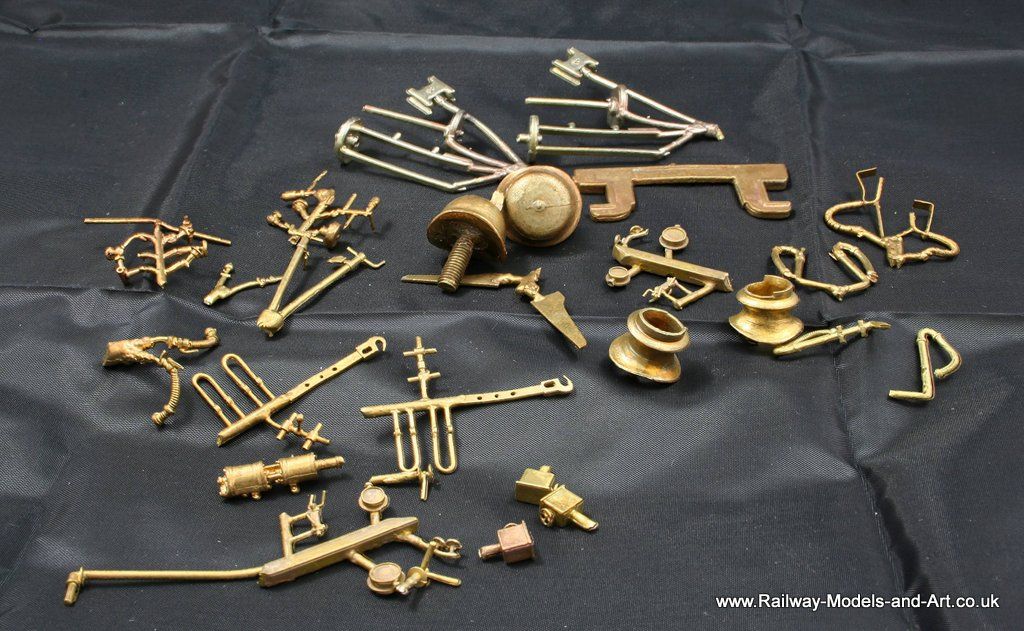
The kit contains lots of lovely brass castings
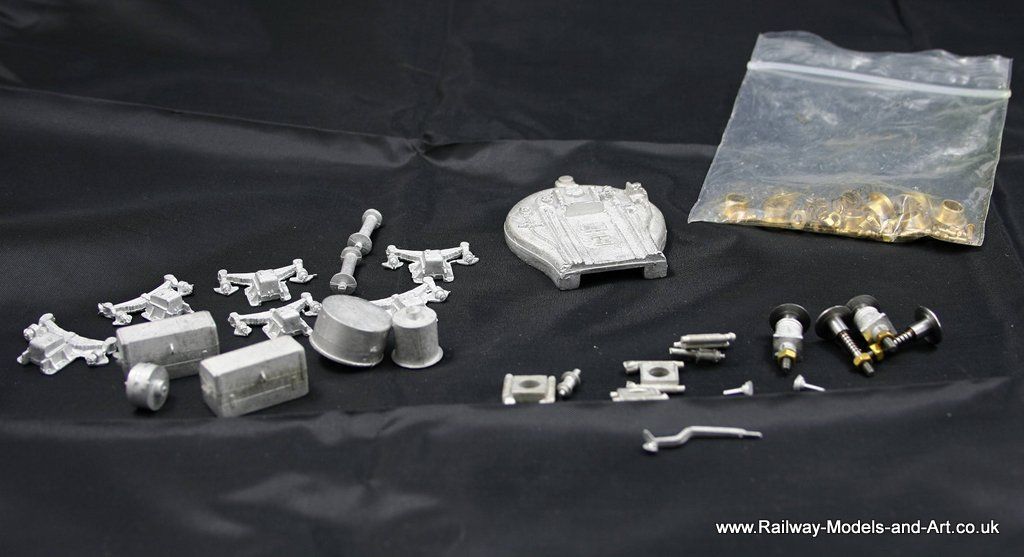
Plus some nice whitemetal ones too.
I have the week off and I will be at home the week after Easter so I plan to make a start on this then. Any spare time on between after finishing of the V4 brake van will be spent blackening wheels and preparing the castings etc.
Re: Gladiator B16/1 A North Eastern Workhorse
Posted: Sat Apr 01, 2017 10:22 pm
by jwealleans
Martin's almost finished one of those, Rob, if you want to pick his brains about anything.
Re: Gladiator B16/1 A North Eastern Workhorse
Posted: Sun Apr 02, 2017 10:46 am
by Robpulham
jwealleans wrote: ↑Sat Apr 01, 2017 10:22 pm
Martin's almost finished one of those, Rob, if you want to pick his brains about anything.
Brilliant, that's worth knowing.
Fingers crossed the worst is over, apparently the frames were too long so needed trimming but that's already been done.
Thanks
Re: Gladiator B16/1 A North Eastern Workhorse
Posted: Fri Apr 14, 2017 7:45 pm
by Robpulham
A good start was made this afternoon, I got the half the drivers/tender wheels shorted out and the ones that didn't need shorting, cleaned and into the blackening solution. I also blackened the buffer heads.
Time for food and then back on with it.
Re: Gladiator B16/1 A North Eastern Workhorse
Posted: Sun Apr 16, 2017 3:07 pm
by Robpulham
Although I didn't get back to it on Friday night further progress was made yesterday.
To get a feel for things I decided to make a start on the tender. There are a few options for frame spacers supplied and I am using those recommended for O finescale and for anyone else who might be building one they don't leave much in the way of side play should you desire it.
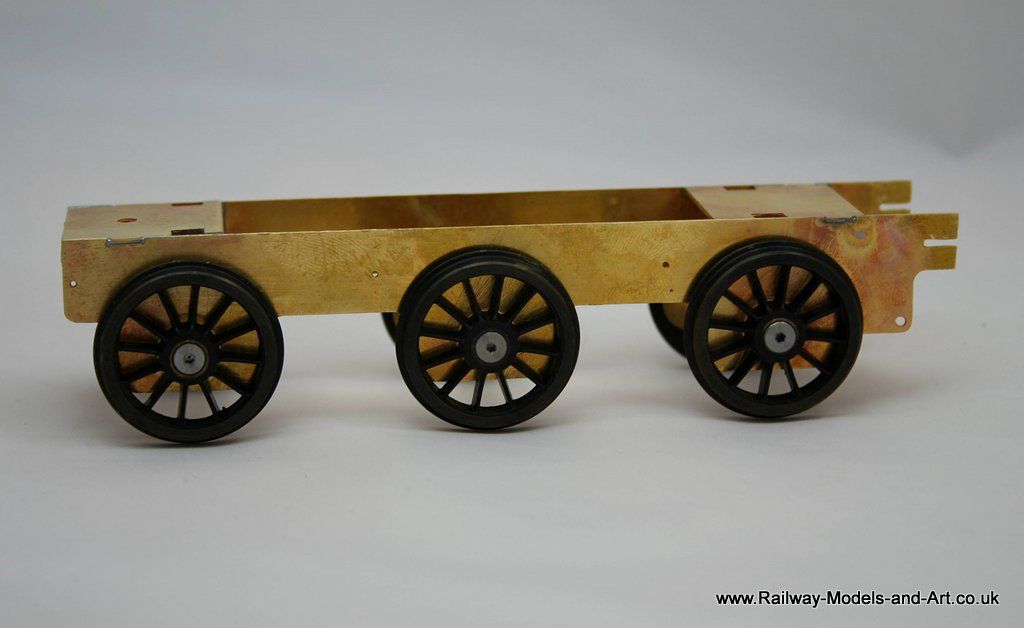
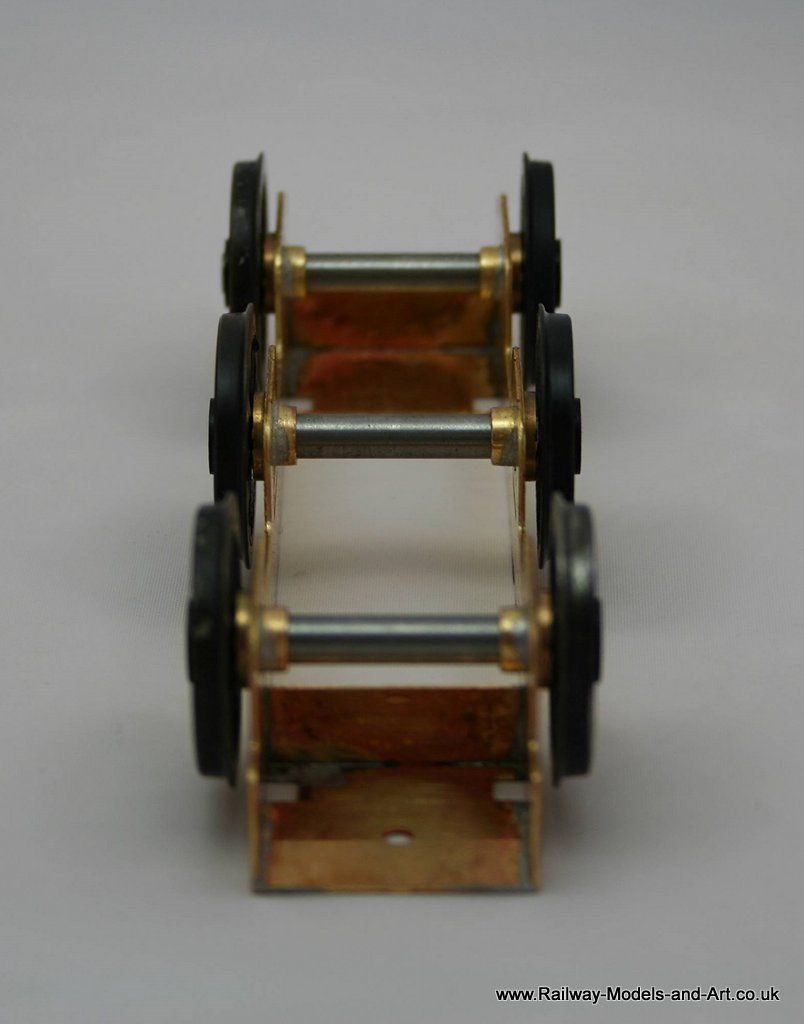
Next up I did the water scoop - so far all the holes have been etched on the small side which is so much better than them being over etched.
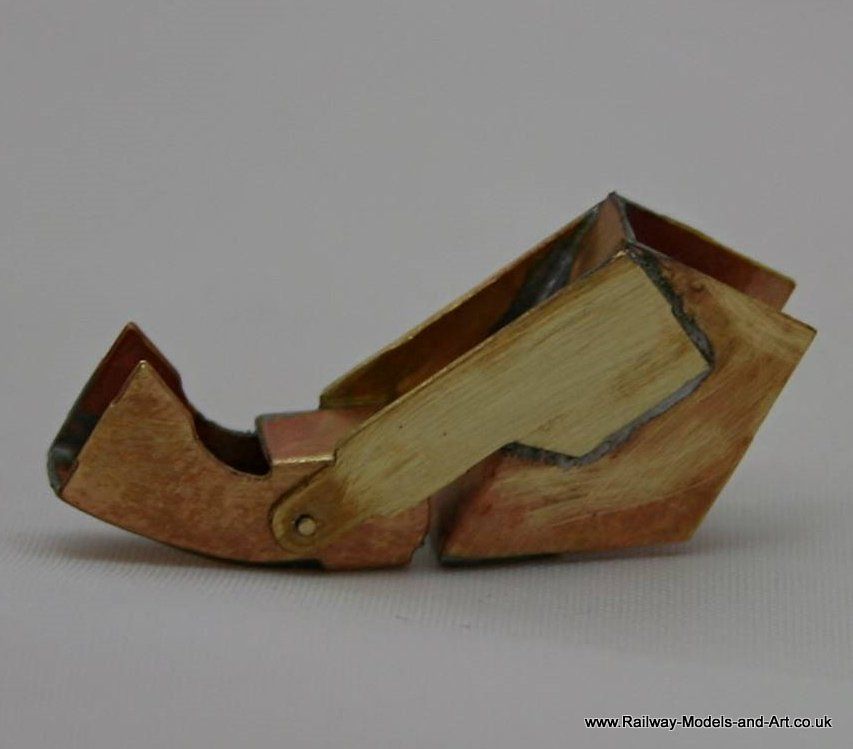
I also soldered up the brakes and found them to be a little odd in that the shoe overlays are slightly smaller than the main etch on the side nearest the wheel. It took a few moments of trial to work out which way round they fitted.
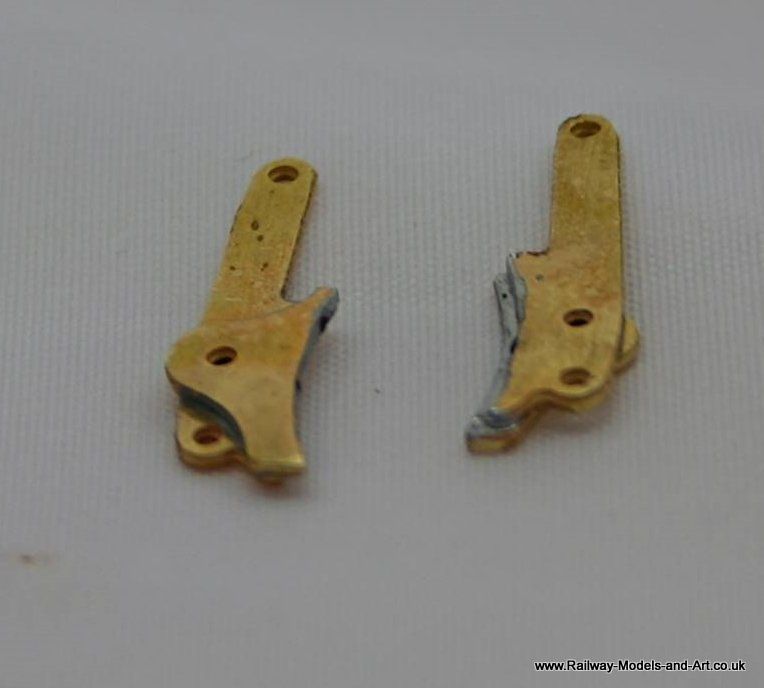
Chris and I popped along to York Show this morning, our first ever visit. It was an enjoyable show and I came away with a couple of books - The Tourette Rail Tank book and the Yeadons volume on among others the B16's - Booklaw had them on at £10 each so it was rude not to partake.
The kit was designed by Steve Barnfield and Steve was one of the demonstrators at York upon seeing him, I planned to have a chat to him about the B16. But despite standing in front of him for a good 5 minutes, he never once looked up from what he was doing to engage me in conversation.
Re: Gladiator B16/1 A North Eastern Workhorse
Posted: Mon Apr 17, 2017 12:12 pm
by Robpulham
In an effort to try to get an answer to the vacuum tank removal date question, I posted enquires on RMWeb and the LNER forum. So far I haven't had any replies, so me next plan is to fit it. Working on the theory that it will be easier to remove later than to leave it off and then try to fit it should it be needed.
In the meantime I moved on to the front bogie (the plan is to try to get a running chassis to take along to Leigh show for a run on Saturday).
There are two options for building the bogie in the instructions, one uses L type spacers and the other incorporates side control.
I opted to go for the side control method. All went well until I got to fitting the bearings. The instructions say to leave them loose until all is square etc. and then solder them in. What it doesn't say (but admittedly the photo further on in the instructions shows) is that the bearings need to be fitted with the flange to the inside of the frames. I didn't notice this and having soldered them in with the flange to the outside I realised that I had a lot!!! of side play. There isn't any mention of when/where to fit the lovely hornblock/spring castings either.
My newly bought Yeadon volume gave me a couple of reasonably clear photos of the hornblock/spring on the outside of the frames. To achieve this I had to cut away the section of the axle bush that protruded through the frames, cutting back flush with the frames. Once the hornblock/spring castings are soldered on there is just a little side play.
*Note to David if he's looking. It would be worth adding something to the instructions at some point on which way round to fit the bearings
The photos also show quite a prominent bar/frame stretcher across the front of the bogie so I added one at each end from scrap etch.
I haven't soldered the bars that hold the side control yet just in case I need to shorten the springs once I test it.
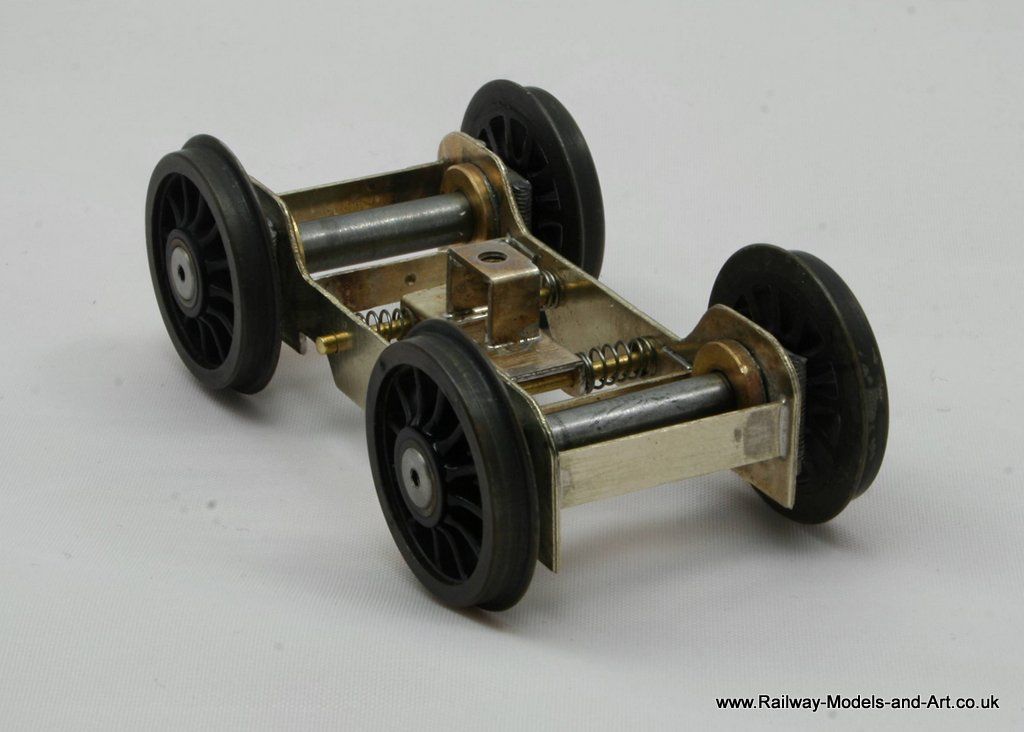
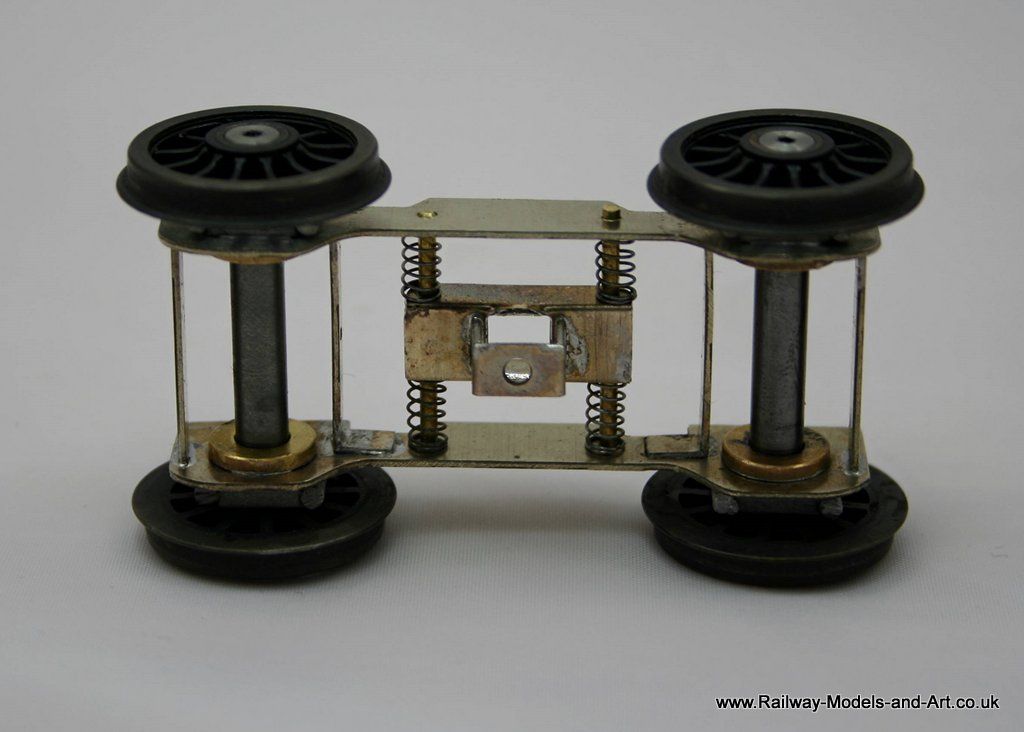
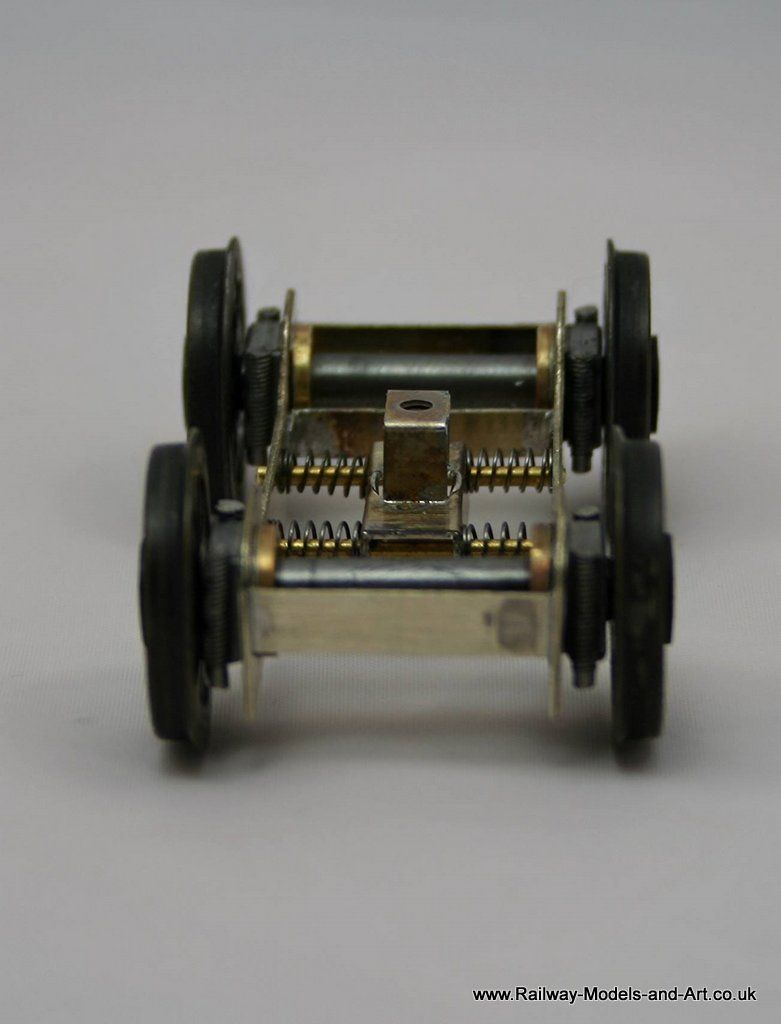
Re: Gladiator B16/1 A North Eastern Workhorse
Posted: Mon Apr 17, 2017 2:52 pm
by 4812
Does your question relate to the air (i e not vacuum) reservoir visible at the rear of the tender frames? If it does, I presume that the reservoir would go when the engine brake was changed from Westinghouse to steam in the 1930s, but so far I haven't come a cross a broadside photograph which shows its absence.
Re: Gladiator B16/1 A North Eastern Workhorse
Posted: Mon Apr 17, 2017 3:39 pm
by Robpulham
Hi 4812,
It does, my mistake. Like you I am struggling to find a BR era photo that shows it one way or the other.
Thanks
Re: Gladiator B16/1 A North Eastern Workhorse
Posted: Mon Apr 17, 2017 4:28 pm
by Phil
I am sure you have got this covered but since your intended loco is 61450 in BR era, it will have the Dia. 49a boiler (fitted in June 1944). The position of the hole drilled for the dome, over the center line for the leading driving wheels, suggests an original Dia 49 boiler and will need to be relocated roughly between the leading and middle driving wheels. Some members of the class reverted in BR days but most, including 61450 kept their new boilers to withdrawal. Only 61459 kept the earlier boiler to the end (9/61) in BR days.
Re: Gladiator B16/1 A North Eastern Workhorse
Posted: Mon Apr 17, 2017 5:20 pm
by Robpulham
Phil wrote: ↑Mon Apr 17, 2017 4:28 pm
I am sure you have got this covered but since your intended loco is 61450 in BR era, it will have the Dia. 49a boiler (fitted in June 1944). The position of the hole drilled for the dome, over the center line for the leading driving wheels, suggests an original Dia 49 boiler and will need to be relocated roughly between the leading and middle driving wheels. Some members of the class reverted in BR days but most, including 61450 kept their new boilers to withdrawal. Only 61459 kept the earlier boiler to the end (9/61) in BR days.
Thanks for that Phil, I will adjust accordingly. It is mentioned in the instructions about the boilers but more along the lines of if you want to build one with a later boiler you will have to accept that it's not going to be 100% accurate because the boiler is the earlier type.
As I said it's not for me so I will do the best I can with what I have to work with.
Re: Gladiator B16/1 A North Eastern Workhorse
Posted: Tue Apr 18, 2017 9:24 am
by Robpulham
Yesterday afternoon saw another good session, I managed to get the rods laminated, and jointed, the wheels and crank pin bushes tapped 10ba and a start made on cleaning up the slide bars and cross heads.
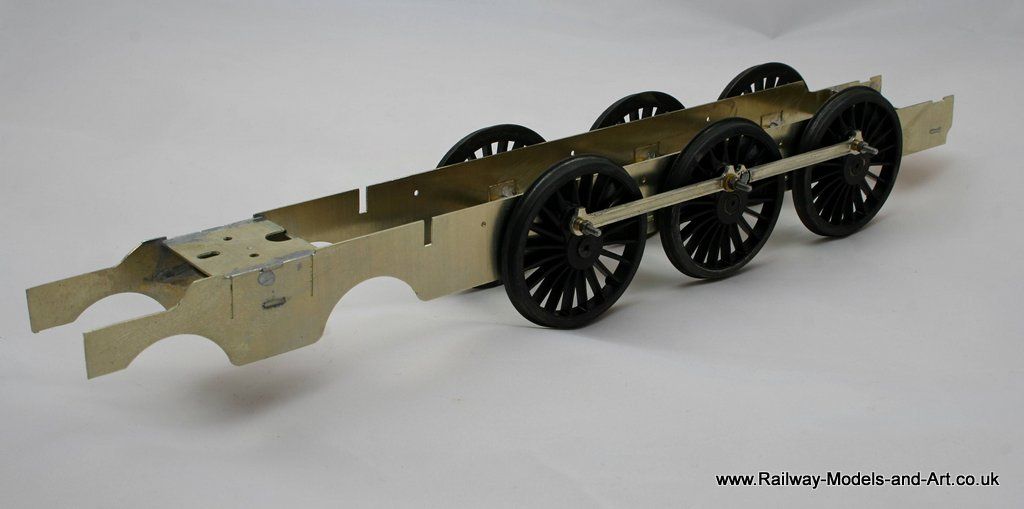
Although the chassis is rigid the rods are designed to be jointed and it made sense to do so. The recommended method in the instructions is to use a 10 ba cheese head screw (supplied) which you put through the rod and solder to the rear layer (putting a piece of paper in between to prevent soldering it up solid). You then file down the screw head until all traces of the slot are gone and you are left with it looking like this.
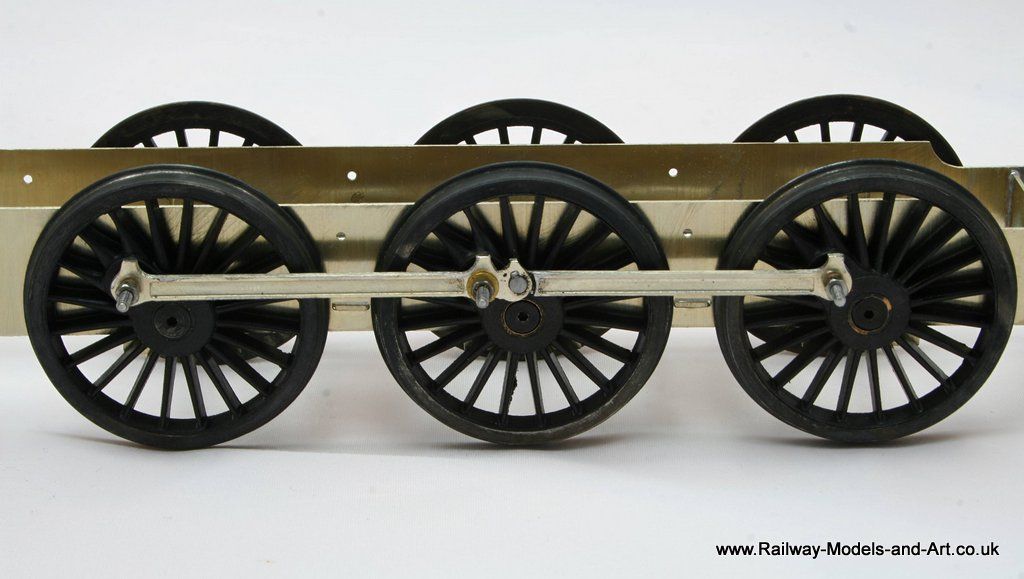
*Note* the washer that you see on the centre axle is just there to support the joint/stop side play on the rods while I tested it before I finally shorten the bushes and screws.
Re: Gladiator B16/1 A North Eastern Workhorse
Posted: Wed Apr 19, 2017 11:34 am
by Robpulham
Yesterday's bench session centred on the connecting rods, cylinders, slide bars and cross heads.
When I came to try the connecting rods I found that on these the holes are etched slightly over size even without taking out any etching cusp which would probably wear away quite quickly. The answer was to use a bit of brass tube that fit snugly over the crank pin bush to create a bush. I reamed out the con rods to take the outside diameter of the tube, cut a couple of short lengths end ensuring that one end of each piece was flat. I place the piece flat side to the face side on the con rode and soldered it in from the rear. I then filed the rear smooth.

Next up I cleaned up and straightened the slide bars and piston rods etc. to get a nice clean smooth sliding fit. To be honest although it took a couple of hours, it was more tweaking to straighten the various bits than filing much off. Although I did go over the sliding bits with fine well used wet and dry to polish them at the end.
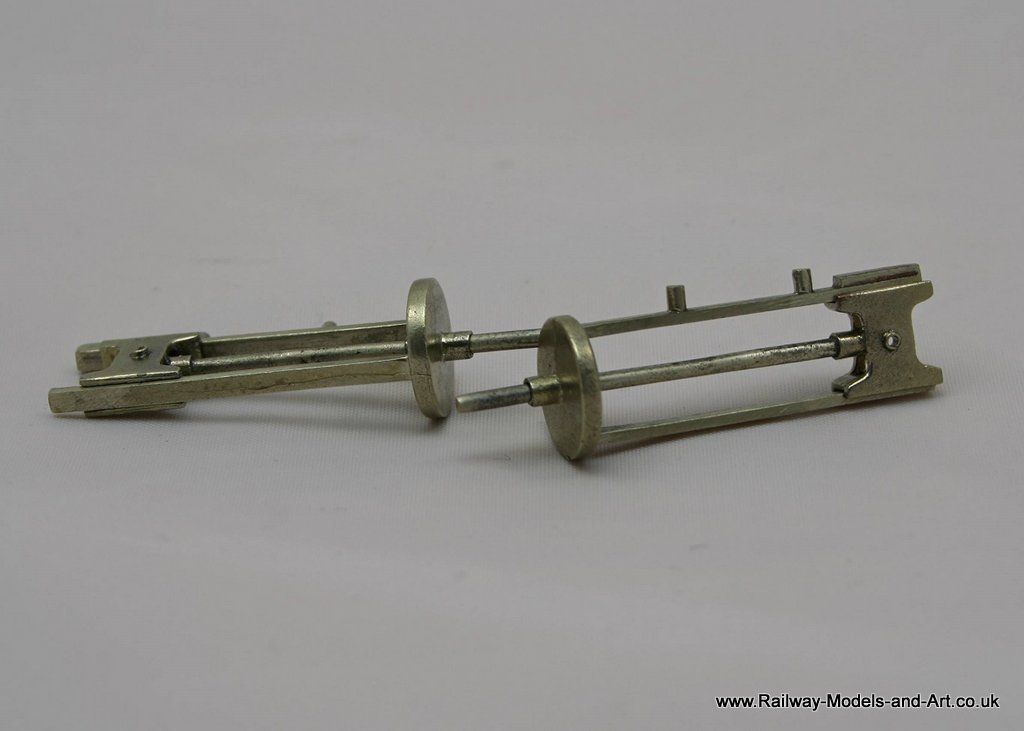
Then I did the same with the motion bracket. The kit is designed so that it just sits in the frames and once the slide bars are attached it allows the cylinders and motion to be removed as a single unit. It required a bit of straightening and bit of filing to get it to sit over the frames without pinching them.
I note from the photo that there still appears to be a slight bend in the middle, but its a nice fit so I am not inclined to upset that by attempting further straightening where it won't be seen.
Last but not least was fitting the cylinder covers. This is always an interesting challenge, made even more interesting in this case by the slope of the cylinders. The instructions advise that the covers have been made over size to allow fitting and filing back. They are, but only just and another millimeter on the overall width would have made the job so much easier. There is talk about annealing for such bends but since the covers are half etched and like many tasks was much easier in the doing than the thinking about before hand.
The hardest bit was holding it all in place once shaped to solder it. I prefer to use the microflame to solder where possible and I made much use of four pairs of self locking tweezer to hold one side in place before adding flux, a short length of 145 solder and applying the flame. This was repeated and the first cover was nicely in place just needing the overlaps fining off.
Maybe I was getting complacent or perhaps it was because it was about quarter past eleven last night, but the second one fought back. Each time I soldered one section another bit came loose, That's despite having lot's of clamps in place but I got there in the end.
Despite the soldering problems with the second one it was still much easier to do in practice than I had built it up to be in my mind before starting the job.
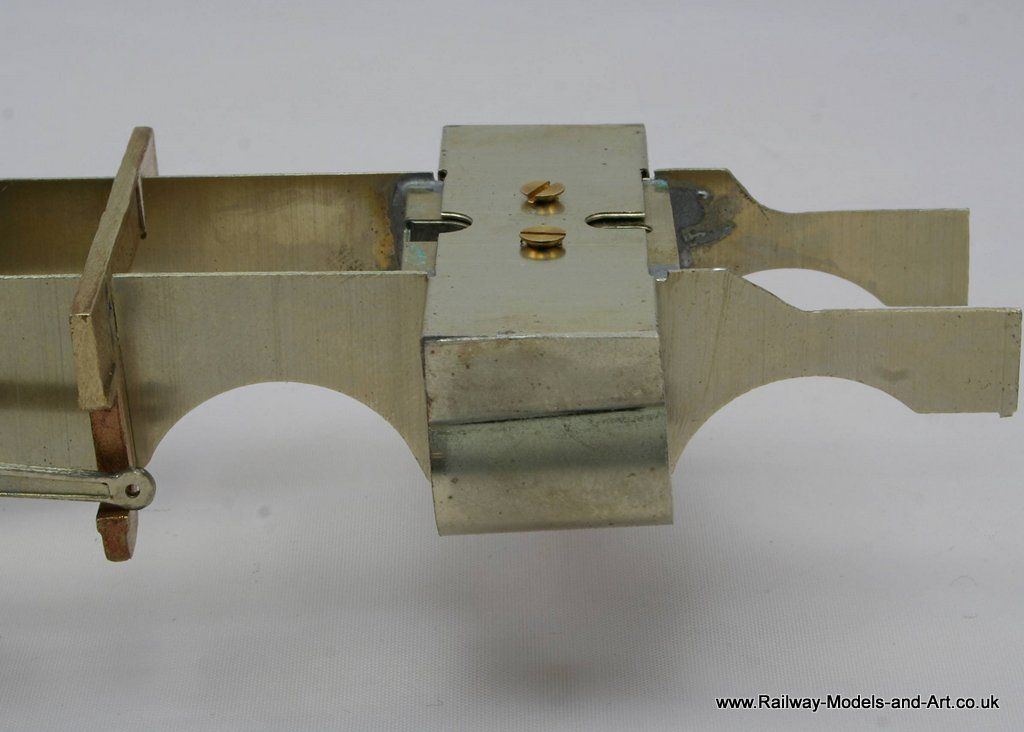

The length of the covers also fall short of going right round the cylinder. I was tempted to put in a bit of scrap to fill the gap but having read the various notes on clearance at the back of the cylinder I will leave that until I have tested it.
Re: Gladiator B16/1 A North Eastern Workhorse
Posted: Thu Apr 20, 2017 9:59 am
by Robpulham
Work continued yesterday (after spending far too much time on the internet!!!).
I the slide bars installed on the motion bracket after slowly working my way backwards with the filing until the cylinders were in the right place.
you can see from the inset photo in this image how much I had to take it back. I did it in three stages checking the fit after each stage.
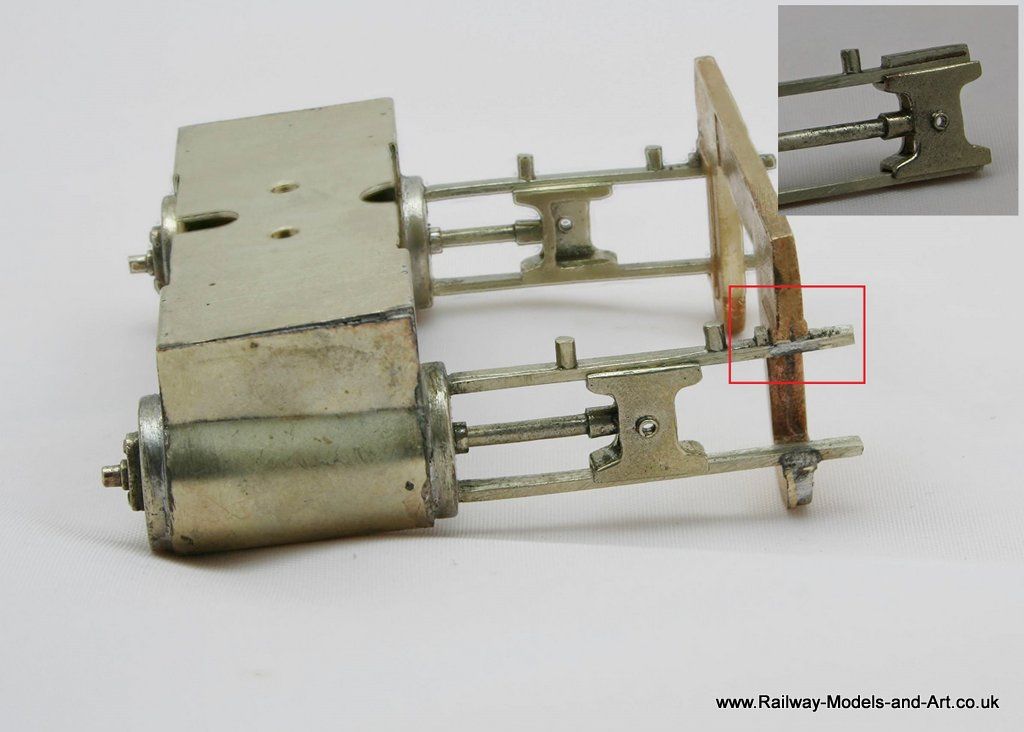
I shortened the piston rods a bit so that they fit inside the slide bars with approx. 2mm protruding from the gland on the inside of the cylinder. Now that I have it all assembled I will fit the connecting rods and cut the piston rods to final length.

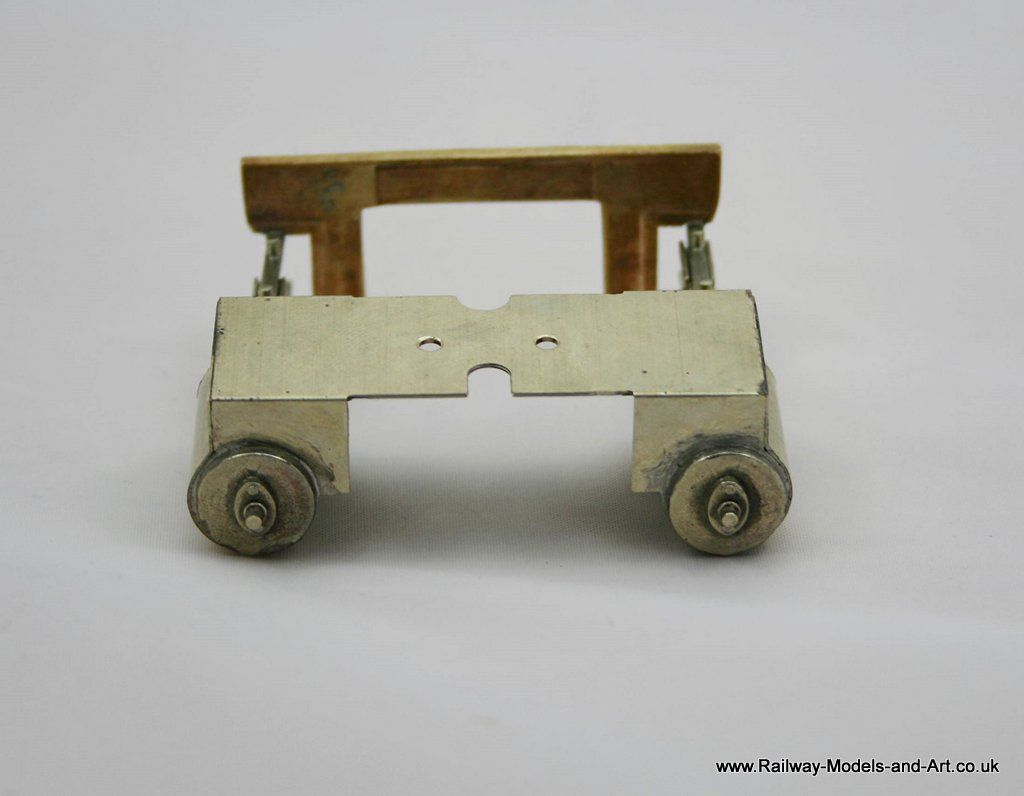

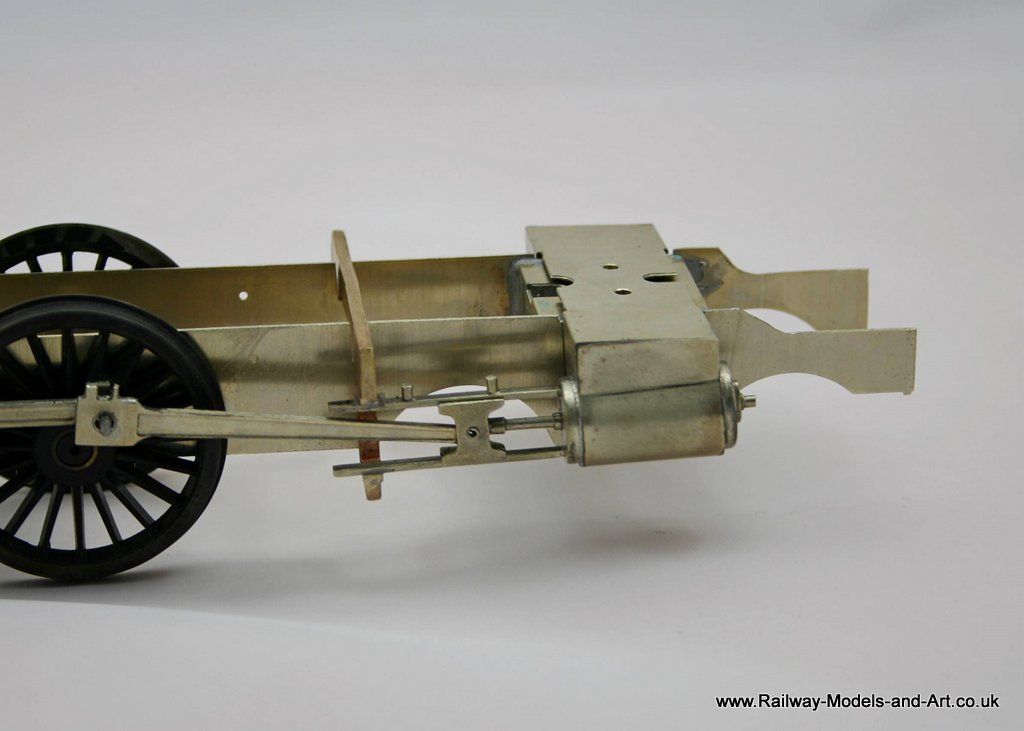
The close ups show that I still have a bit of cleaning up to do.
Re: Gladiator B16/1 A North Eastern Workhorse
Posted: Thu Apr 20, 2017 8:45 pm
by Robpulham
This morning saw the chassis run sweetly at the first go.
https://youtu.be/bGVp5L9NxD0
https://youtu.be/CfJxZw-F5B0
Unfortunately the motor is too big for the firebox as built so a smaller motor will be sought.
Re: Gladiator B16/1 A North Eastern Workhorse
Posted: Fri Apr 21, 2017 10:05 am
by Robpulham
Last night's session saw the brakes and water scoop added to the tender.
I always seem to struggle with setting up brakes that are produced from etchings in that they seem to want to move in all directions when you are trying to solder them. I came up with the idea of wrapping a couple of layers of masking tape (the cheap kind not best Tamiya!) around each tyre which not only creates a gap against possible shorts but it also keep the worst of the flux from the wheel too. This allowed me to lean each shoe against the wheel and with the aid of some locking tweezers I was able to hold it in the right orientation while I soldered it.
Within the kit there is only one brake spreader for the front set of brakes. The rest are just represented by 0.7mm rod. I chose to file up a couple more from scrap etch and solder them on top of the pieces of rod. This not only looks a bit better for the few minutes that it took to do but it also gives a shoulder to space the brake shoes apart - again solving one of the potential directional shifts while trying to solder them.
You can't really make it out in the photo but the forks in the two actuating rods that come from the front to the first spreader are slightly two wide for the single layer etch of the spreader. I could have nipped them closed a bit and just soldered them but again it was only the work of moments to wrap a couple of pieces of the half etched tags that I have cut of the various parts around the spreader and once the etching cusp was removed from the forks a much better fit that again held itself in place while applying the solder to it.
In reality the water scoop would fit below the brake spreader but in the interests of not having it catching anything on the track while running I soldered it to the top of the spreader. Once the outer frames are in place not much of it will be seen so I chose safety over accuracy.
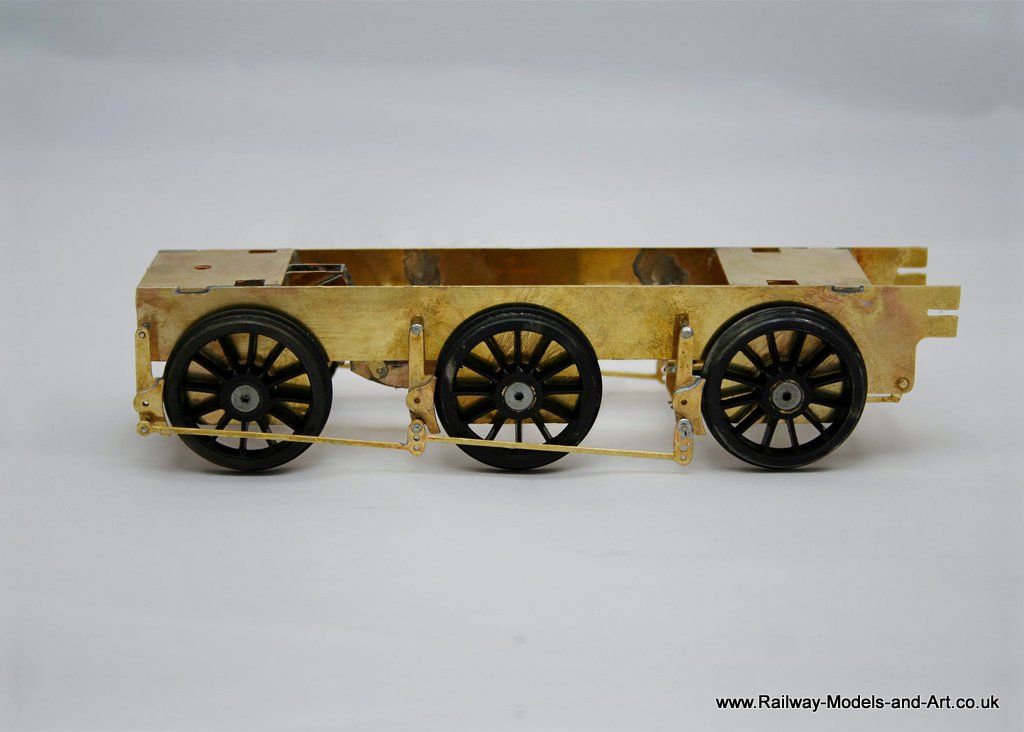
The added spreader certainly improves the look from the rear of the tender.
